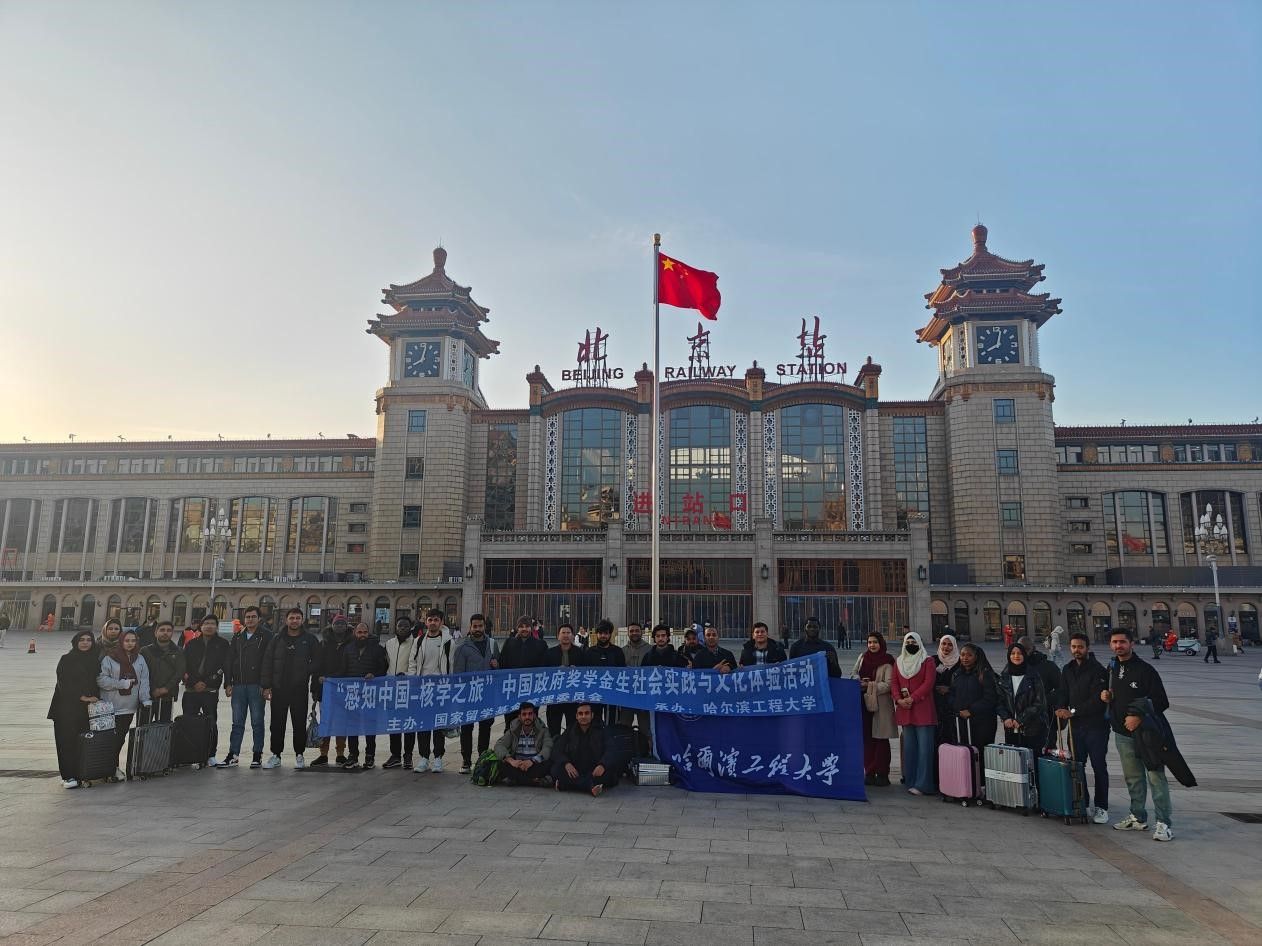From November 18 to 20, 2024, the international students from the College of Nuclear Science and Technology at Harbin Engineering University were toured to Nuclear Institutions in Beijing. Participants explored China’s remarkable advancements in nuclear research, safety, and innovation through visits to several leading institutions. The tour included the China Institute of Atomic Energy (CIAE), the State Nuclear Security Technology Center (SNSTC), the Nuclear and Radiation Safety Center (NRSC), the Institute of Nuclear and New Energy Technology (INET) at Tsinghua University, and China National Nuclear Corporation Overseas Limited (CNNC). Each visit highlighted China’s commitment to sustainable energy solutions, cutting-edge research, and global collaboration.

The tour began at the China Institute of Atomic Energy (CIAE), a pioneer in nuclear research since its founding in 1950. It is renowned for its contributions to nuclear physics, reactor engineering, and medical applications. CIAE presented its advanced cyclotrons, which support applications like proton therapy for cancer treatment, industrial testing, and nuclear experimentation. Participants were introduced to CIAE’s innovative work in Boron Neutron Capture Therapy (BNCT) and space radiation research, which shows its commitment to addressing global challenges through nuclear science. A main highlight was a visit to the institute’s reactor engineering facilities, showcasing the China Experimental Fast Reactor (CEFR). The CEFR, a hallmark of fast reactor technology, improves fuel efficiency and minimizes nuclear waste, illustrating CIAE’s dedication to sustainable energy solutions. International partnerships, including collaborations with Pakistan, further underscored CIAE’s role in advancing global scientific exchange. The institute’s ambitious plans for next-generation accelerators and advanced reactor designs demonstrate its forward-thinking vision for societal progress and innovation.

On next day the participants visited to the State Nuclear Security Technology Center (SNSTC). Its critical role in enhancing nuclear security and promoting international cooperation were highlighted. Established in 2011, the center collaborates with the International Atomic Energy Agency (IAEA) as a designated Collaborating Center, affirming China’s dedication to upholding international nuclear security standards. With 58 operational nuclear power plants and 29 under construction, SNSTC supports the country’s low-carbon energy strategy through advanced techniques. Its state-of-the-art laboratories conduct environmental testing and electromagnetic compatibility evaluations, ensuring the reliability of nuclear equipment. SNSTC also emphasizes training the next generation of nuclear professionals. In 2023 alone, more than 100 students were awarded China Atomic Energy Scholarship to study in the field of Nuclear Energy. By addressing emerging nuclear security threats and fostering global partnerships, SNSTC highlighted its pivotal role in building a secure and sustainable future for nuclear energy.

The Nuclear and Radiation Safety Center (NRSC) visit revealed its indispensable role in regulating and monitoring nuclear and radiation safety in China and internationally. Operating under the Ministry of Ecology and Environment (MEE), the NRSC ensures compliance with safety standards for nuclear facilities and monitors environmental radiation levels. With a workforce of 600, the center operates advanced laboratories including simulators for CPR 1000 and HPR 1000 reactors. Its specialized facilities, such as the Thermal Hydraulic and Reactor Safety Laboratory, the Risk Assessment Laboratory, and the Corrosion and Protection Performance Laboratory, focus on enhancing reactor safety, risk management, and material durability. Strategic collaborations with organizations like the IAEA and OECD/NEA further strengthen its contributions to safe and sustainable nuclear practices. The NRSC’s efforts depicts its central role in shaping a globally compliant nuclear energy framework.

On last day of tour at Tsinghua University’s Institute of Nuclear and New Energy Technology (INET), participants explored leading-edge research in nuclear reactor technology. Established in 1961, INET has been instrumental in developing advanced reactors such as the HTR-10, a 10 MW high-temperature gas-cooled reactor completed in 1995, and its successor, the HTR-PM, a 200 MW modular reactor. These reactors, featuring helium coolant systems, high-temperature operations, and continuous fuel circulation capabilities, demonstrate China’s leadership in reactor innovation. INET’s Applied Nuclear Technology Laboratory has achieved significant advancements in radiation shielding and the integration of AI into technologies like Cobalt-60 container scanners, enhancing detection accuracy. The visit also included discussions on nuclear power plant cybersecurity, highlighting challenges in safeguarding systems from cyber threats. INET’s proactive adoption of AI-driven cybersecurity measures and alignment with international guidelines reflect its commitment to securing nuclear systems. With 20 research divisions, INET continues to lead in reactor development and system security, cementing its role as a global pioneer in nuclear energy.

The last visit brought participants to China National Nuclear Corporation (CNNC), a leader in nuclear energy technology and sustainable solutions. Established in 1983, CNNC has achieved significant milestones, including the development of the HPR-1000 third-generation reactor, the High-Temperature Gas-Cooled Reactor (HTR-PM), and the newly approved HGTR-PM-600 unit. These advancements highlight China’s leadership in nuclear power and its focus on innovative technologies such as small modular reactors. CNNC’s comprehensive nuclear solutions span the entire supply chain which includes uranium mining and fuel fabrication to radioactive waste management. The visit also highlighted its work in BNCT, an innovative cancer treatment approach, and its strategies for financing nuclear projects. Presentations on the economics of nuclear power emphasized its long-term possibility, stable electricity prices, and minimal environmental impact. CNNC’s integrated approach and global outreach reaffirm its position as a significant player in promoting clean, sustainable, and secure energy solutions.
The Nuclear Science Tour offered participants a supreme glimpse into China’s advancements in nuclear innovation and safety. Each institution highlighted the nation’s leadership in leveraging nuclear technology for sustainability, global collaboration, and societal benefit, strengthening its role as a pivotal force in shaping the future of nuclear energy worldwide.
